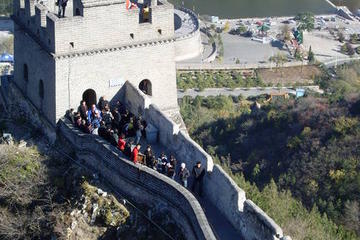
The Great Wall of China is the greatest symbol of ancient Chinese engineering and one of the world's most famous structures. Its name in Chinese means 'Long Fortress', and it was built to protect the northern edge of the Chinese empire against invasions from Mongolian nomads.
All up, the Great Wall, including trenches and natural defensive features such as rivers, stretches 8,850km (5,500mi). It was begun in the Qin Dynasty (221-206 BC) on a very simple scale, and was expanded and fortified in the Ming Dynasty. Truth to tell, the Wall was never that effective against Mongol invasion, but eventually the threat abated anyway as the Mongol nomads were converted and assimilated.
A wander on the Great Wall these days takes you back to the Ming empire as well as affording you sweeping views of the surrounding countryside.
Much of the Great Wall is now in disrepair, but certain sections are maintained for visitors. One of the most popular is Badaling, close to Beijing; this section is often crammed with tourists.
The Mutianyu section offers a quieter alternative, also close to Beijing, This section features an optional cable car ride, or an opportunity to climb more than 1,400 steps to the top.